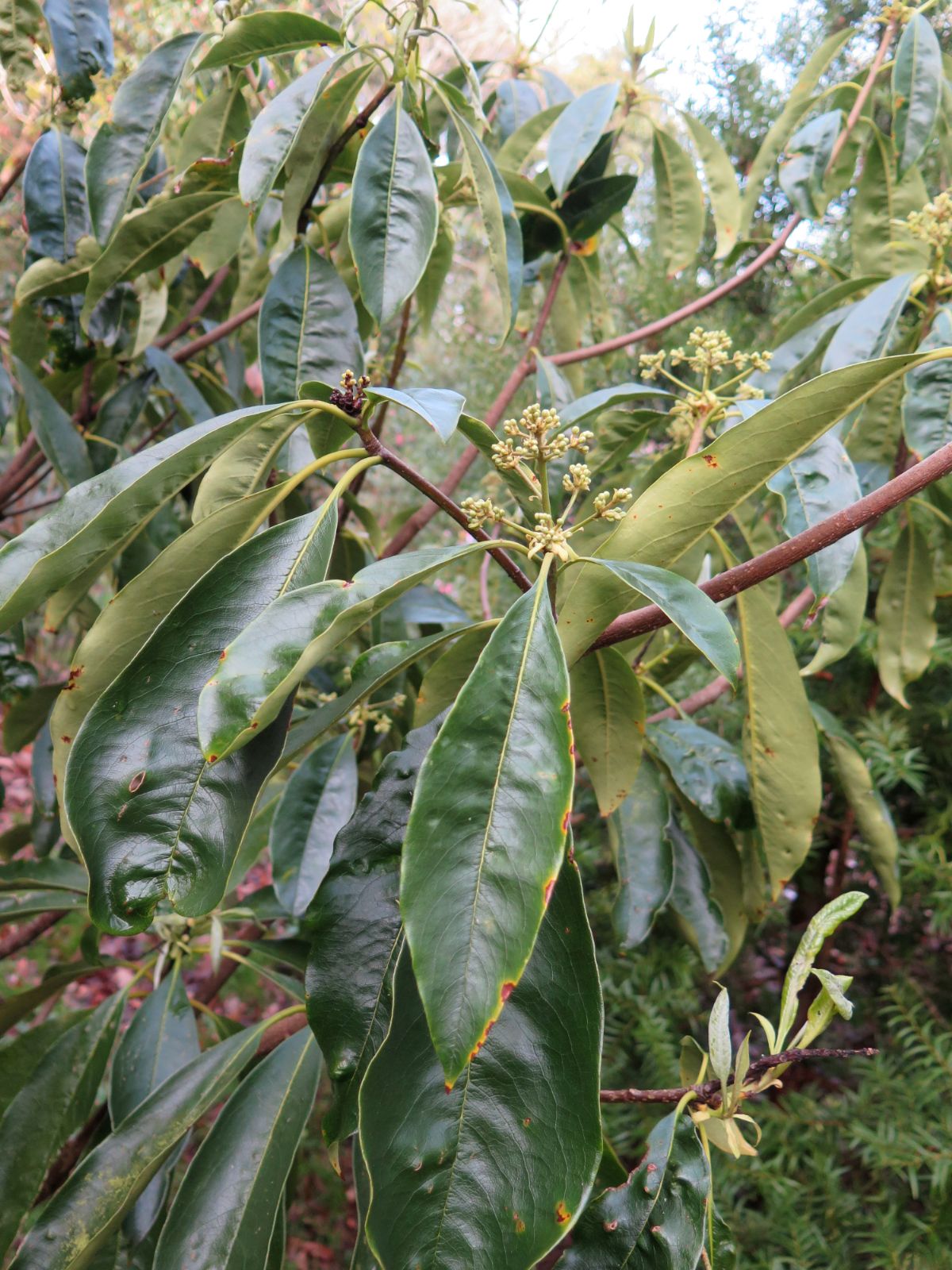Pittosporum adaphniphylloides
Credits
Article from Bean's Trees and Shrubs Hardy in the British Isles
Recommended citation
'Pittosporum adaphniphylloides' from the website Trees and Shrubs Online (treesandshrubsonline.
Genus
Synonyms
- P. daphniphylloides sens. Rehd. & Wils., not Hayata
Other taxa in genus
- Pittosporum bicolor
- Pittosporum brevicalyx
- Pittosporum buchananii
- Pittosporum colensoi
- Pittosporum cornifolium
- Pittosporum crassifolium
- Pittosporum dallii
- Pittosporum daphniphylloides
- Pittosporum divaricatum
- Pittosporum eugenioides
- Pittosporum glabratum
- Pittosporum huttonianum
- Pittosporum patulum
- Pittosporum phillyreoides
- Pittosporum revolutum
- Pittosporum rigidum
- Pittosporum tenuifolium
- Pittosporum tobira
- Pittosporum undulatum
An evergreen shrub or sometimes a tree up to 30 ft high, slightly downy on the young shoots and beneath the young leaves. Leaves narrowly oblong to narrowly obovate, tapered towards both ends, but more gradually towards the base, dark green, 21⁄2 to 8 in. long, 11⁄4 to 31⁄2 in. wide; stalk 5⁄8 to 11⁄4 in. long. Flowers 1⁄4 in. long and wide, greenish yellow, crowded in several globose, umbellate clusters 3⁄4 to 11⁄2 in. wide that form a terminal panicle; main and secondary flower-stalks harshly hairy; petals oblong, 1⁄4 in. long, blunt; anthers yellow. Fruits globose, 1⁄4 to 3⁄8 in. wide, wrinkled, red.
Native of W. Szechwan, China, whence it was introduced by Wilson in 1904. He describes it as a handsome species found in woods, thickets, and rocky places, and as having leaves sometimes 10 in. long and 4 in. wide without the stalk. As it occurs at low altitudes (3,000 to 5,000 ft), it is probably best adapted for our milder localities. There is a healthy tree at Caerhays, in Cornwall, very noticeable for the size of its leaves, which must be about the largest found on any pittosporum that can be grown in this country; it is 11 ft high and 24 ft in spread (1966). Another was bearing fine crops of berries at Warley, Essex, in November 1934.
This species has been known by the erroneous name P. daphniphylloides Hayata, which properly belongs to a species native to Formosa. Hayata himself was really responsible for the original confusion, since he noted that Wilson’s Veitch expedition specimen no. 3233 in the Kew Herbarium was ‘exactly like’ the Formosan plant; and Rehder and Wilson, having seen no Formosan specimens, followed him and accepted Wilson’s Szechwan specimens as P. daphniphylloides (Pl Wilsonianae, Vol. 3, p. 326).

